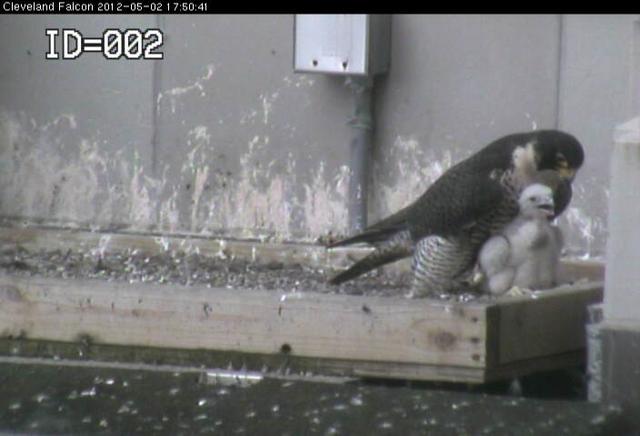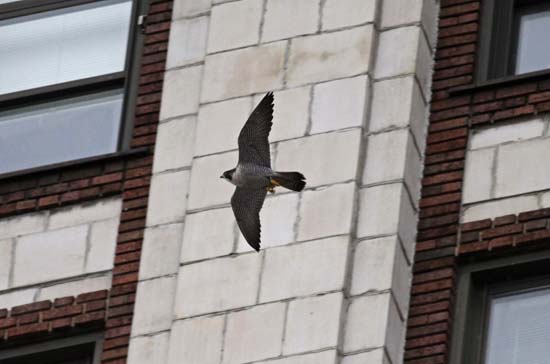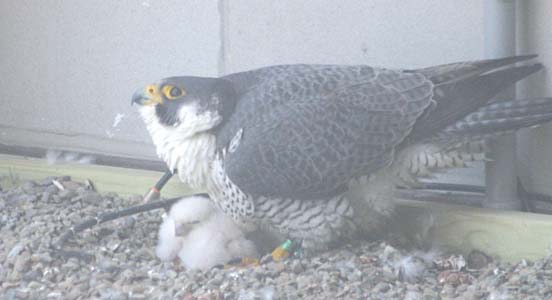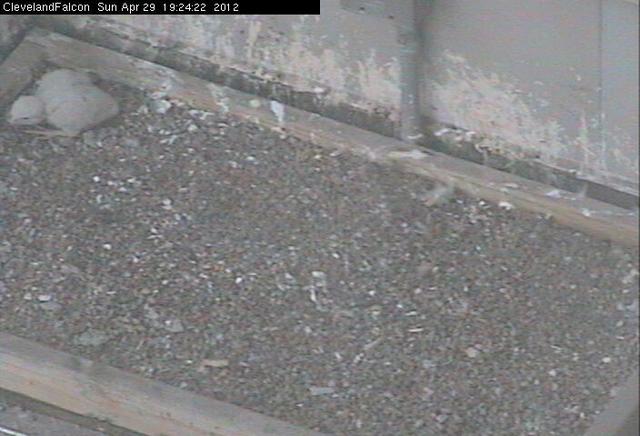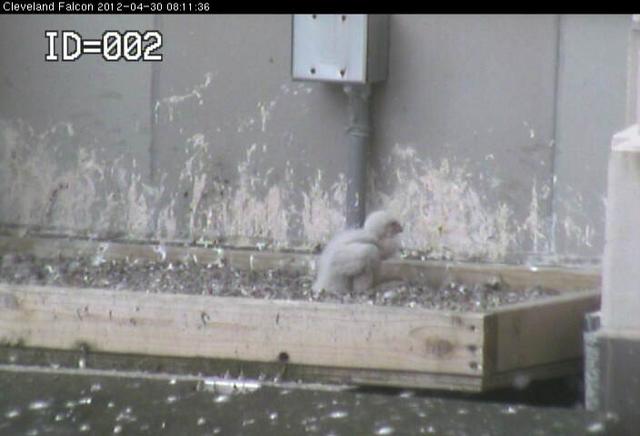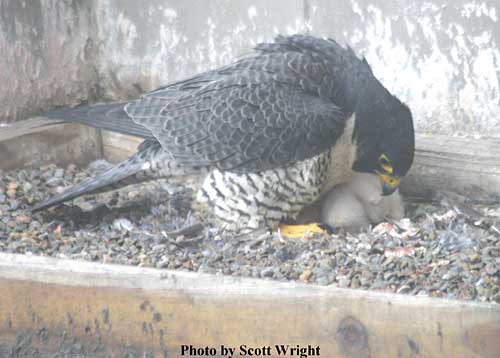FALCON FLASH
Dateline: Cleveland, Ohio
May 2, 2012
Click here to read what happened earlier
You will see big changes from now on. Watch the falcons live at: http://www.falconcam-cmnh.org/news.php
Our thanks to the Cleveland Museum of Natural History for sponsoring the FalconCams and for the stills.
Photos are courtesy of Scott Wright, volunteer peregrine nest monitor. They may be used in any non-commercial publication, electronic or print, but please give photo credit.
SW and Boomer’s eyass is about one week old.
At first, the eyass cannot self-regulate its body heat and the parents cover it whenever it is cool. Mr. Harvey Webster, Director of Wildlife Resources at the Cleveland Museum of Natural History, tells us that even with cold weather or heavy rain, “…..it is a tribute to S/W that she can create a warm and dry sanctuary for the chicks with her own body. The parents, in brooding the chicks, provide a source of warmth. In fact the temperature closest to the brood patch on S/W's abdomen might be close to 100 degrees F. The brood patch is featherless and highly vascularized to provide maximum surface area for heat transfer”.
Peregrine eyasses grow at an incredible rate. By the time they are six weeks old they will be as big as their parents. Each week you will notice changes in appearance and behavior. During the first week, the eyass can’t do much - except eat! SW spends most of her time keeping the eyass warm and doing the feeding, and Boomer does most of the hunting at this point. There are several feedings per day. Wildlife biologist Marcel Gahbauer tells us: "…. the chicks at a young age already scream for food incessantly, regardless of how recently they have been fed. This will only increase, and eventually you will see both adults away from the nest most of the time, for as long as one or the other is present, the chicks will be clamouring for food from them, even if they have none."
You would be surprised at how much an eyass can eat. Here is Boomer leaving to hunt.
With warmer weather, the parents may leave their little one uncovered a bit more for us to see.
Have you been monitoring the FalconCams? If so, you have noticed the eyass is now strong enough to somehow move around the nest.
Click here to read what happened next


